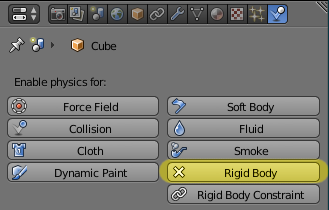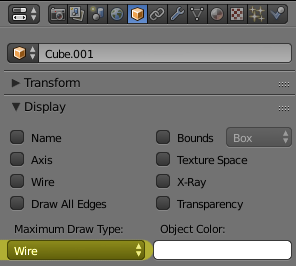Physics properties¶
Exporting physics properties is done by enabling "Rigid Body" in Blender's physics tab:

Important
By default, a single Blender object with rigid body enabled will export as three nodes: a PhysicsBody, a CollisionShape, and a MeshInstance.
Body type¶
Blender only has the concept of "Active" and "Passive" rigid bodies. These turn into Static and RigidBody nodes. To create a kinematic body, enable the "animated" checkbox on an "Active" body:

Collision shapes¶
Many of the parameters for collision shapes are missing from Blender, and many of the collision shapes are also not present. However, almost all of the options in Blender's rigid body collision and rigid body dynamics interfaces are supported:

- There are the following caveats:
Not all of the collision shapes are supported. Only
Mesh,Convex Hull,Capsule,SphereandBoxare supported in both Blender and GodotIn Godot, you can have different collision groups and collision masks. In Blender you only have collision groups. As a result, the exported object's collision mask is equal to its collision group. Most of the time, this is what you want.
Important
To build compound physics shapes, parent together multiple objects with rigid body enabled. The physics properties are taken from the parent-most rigid body, and the rest are used as collision shapes.
Collision geometry only¶
Frequently you want different geometry for your collision meshes and your graphical meshes, but by default, the exporter will export a mesh along with the collision shape. To only export the collision shape, set the object's maximum draw type to Wire:

This will also influence how the object is shown in Blender's viewport. Most of the time, you want your collision geometry to be shown see-through when working on the models, so this works out fairly nicely.